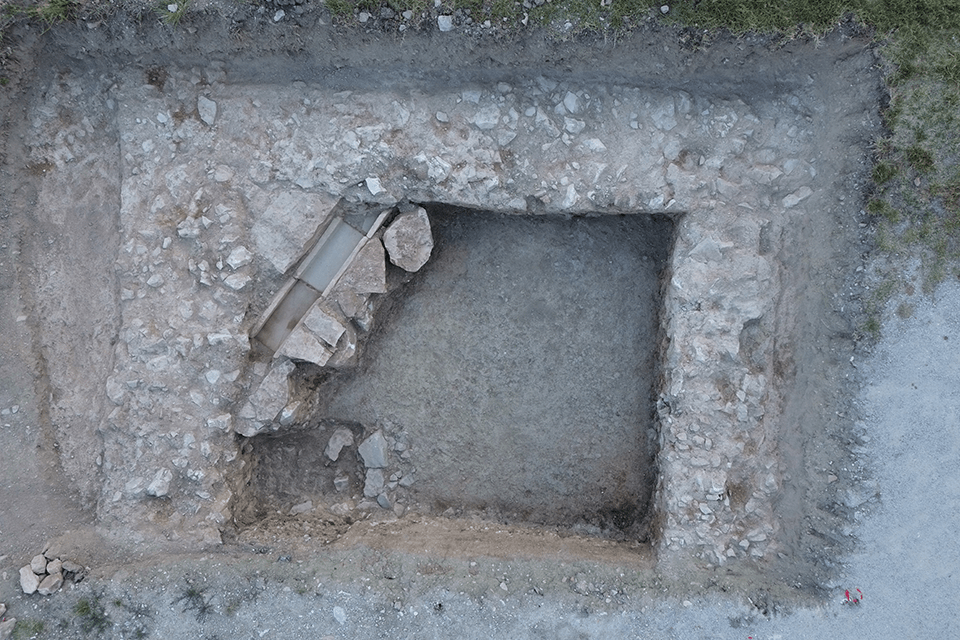Archaeology & History
How a 4th-Century Letter Led to the Discovery of an Ancient Roman Temple in Italy
The remains of the temple were unearthed in the town of Spello, underneath a parking lot.

The remains of the temple were unearthed in the town of Spello, underneath a parking lot.

Artnet News

Archaeologists have unearthed the remains of an ancient Roman temple in Spello, Italy, by closely reading the correspondence of a 4th-century Roman ruler.
Excavated at the Medieval hilltop city were three inner walls of what was a monumental structure, likely an ancient pagan temple, underneath a parking lot. Their whereabouts were pinpointed by Douglas Boin, a history professor at Saint Louis University, based on a letter penned by the Roman Emperor Constantine, who reigned from 306 to 337 C.E.
Discovered in the 18th century, Constantine’s letter authorized the citizens of Spello to commemorate a religious holiday in their hometown, instead of traveling to another festival at a great distance. In exchange, the emperor instructed the town to construct a temple to worship the Flavian dynasty, which he deemed his divine ancestors.
To Boin, the letter was remarkable. Through his order, Constantine, despite being the first Roman Emperor to embrace Christianity, was still associating himself with an “imperial cult practice,” seeking to venerating a storied family that left its imprint on the empire with monuments such as the Colosseum.
“The location of this temple had never been securely identified,” Boin said in a statement, “but because of the inscription and its reference to a temple, Spello offered a very tantalizing potential for a major discovery of an Imperial cult underneath a Christian ruler.”
To locate the structure, the research team used underground imaging to hunt for potential ruins. In weeks, they received promising images of where they suspected the structure’s foundations to be and began digging. Two adjoining walls first surfaced, then the inside walls. Further excavations are planned to uncover what lies underneath the dirt at the site.
But already, Boin sees this initial find as significant, as it potentially offers insight into how the Roman Empire shifted from pagan worship to Christianity. While Constantine did adopt the new religion, it took almost seven decades before Christianity was officially recognized by Emperor Theodosius and for pagan followers to similarly convert. The temple at Spello could shed further light on that period of gradual, yet meaningful, societal change.
“This building, in a very radical way on its own, shows us the staying power of the pagan traditions that had been on the ground for centuries prior to the rise of Christianity,” said Boin. “It shows us how the Roman emperors continued to negotiate their own values, hopes, and dreams for the future of the emperor and the Empire without knocking down or burying the past.”
More Trending Stories:
Art Dealers Christina and Emmanuel Di Donna on Their Special Holiday Rituals
Stefanie Heinze Paints Richly Ambiguous Worlds. Collectors Are Obsessed
Inspector Schachter Uncovers Allegations Regarding the Latest Art World Scandal—And It’s a Doozy
Archaeologists Call Foul on the Purported Discovery of a 27,000-Year-Old Pyramid
The Sprawling Legal Dispute Between Yves Bouvier and Dmitry Rybolovlev Is Finally Over